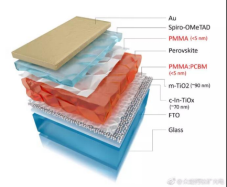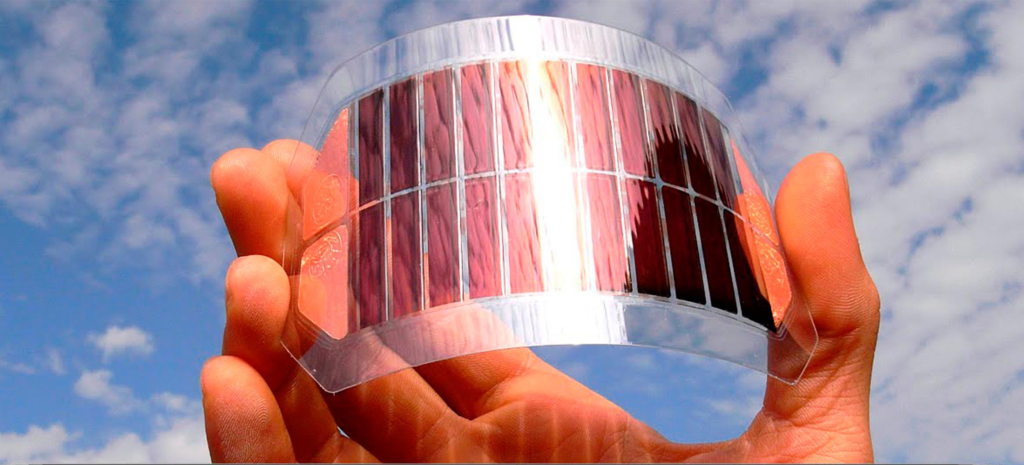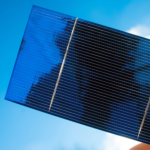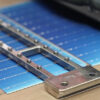What is a Chalcogenide solar cell?
Chalcogenide solar cells are solar cells that use chalcogenide, an organometallic halide semiconductor, as a light-absorbing material and belong to the third generation of solar cells, also known as New Concept Solar Cells.
To date, most solar cells have been made from silicon, as this material is very good at absorbing light. However, silicon panels are expensive to manufacture.
What is the structure of a chalcogenide solar cell?
Scientists have been working on a structure made up of chalcogenide to make it an alternative to silicon. True chalcogenide, a mineral found in the earth, is made up of calcium, titanium and oxygen molecules that have been specially arranged. Materials with the same crystal structure are called chalcocite structures.

Compared to structures connected in a co-angular or co-planar form, the chalcocite structure appears to be more stable and more conducive to the diffusive migration of defects. As a result, chalcogenide has many excellent physicochemical properties, such as electrocatalytic properties and light absorption.
Advantages of chalcogenide solar cells.
Chalcogenide structures are ideally suited as the active layer for light absorption in solar cells, as they absorb light more efficiently than silicon and at a lower cost. The equipment required to integrate chalcogenide structures into solar cells is also relatively simple. For example, they can be dissolved in a solvent and sprayed directly onto the substrate.
Chalcogenide solar cells have several significant advantages over GaAs and silicon-based solar cells.


Firstly, there are cost advantages. Inexpensive chalcogenide photovoltaic materials are used as light-absorbing materials, and the preparation process is significantly less expensive than gallium arsenide and crystalline silicon.
Secondly, the flexibility advantage. Chalcogenide photovoltaic materials in solar cells usually exist in the form of thin films of sub-micron thickness, which are suitable for the construction of flexible solar cells, so that the surface space of the bending carrier can be fully utilized.
Furthermore, the high energy to mass ratio is an advantage. Chalcogenide solar cells are a new class of thin-film solar cells with a lighter mass and higher energy per unit mass, especially flexible chalcogenide solar cells, which have been shown to have a very high energy to mass ratio (> 20 W g-1) unattainable by other types of solar cells.
In addition, chalcogenide materials have a good radiation resistance potential. It has been reported that chalcogenide semiconductors exhibit better radiation resistance than glass after 1535 hours of continuous radiation from 2.3Mrad gamma (γ) rays.
Based on these advantages, chalcogenide solar cells are expected to develop into a new generation of space photovoltaic energy technology.

Disadvantages of chalcogenide solar cells.
Materials consisting of chalcogenide structures promise to revolutionise solar cell devices, but have a serious drawback: they are generally very unstable and their performance degrades under high temperature conditions. This is a serious impediment to their commercial use.
The material is toxic – chalcogenide battery materials contain lead, although lead is nothing compared to the arsenic, gallium, tellurium and cadmium contained in other types of batteries. Northwestern University has also developed a calcium titanite solar cell using tin instead of lead, but the conversion efficiency of this cell is still only 6%, and the material is very unstable, and is currently in the early stages of research and development;
The material is unstable – the lead in chalcogenide is prone to oxidation and iodine volatilisation, and the crystals are prone to decomposition when exposed to moisture. If we use a calcium titanite battery to generate electricity, it is likely to break down and seep out onto the roof or into the soil;
Battery life is not long – currently, the longest-lasting chalcogenide solar cell is 1000 hours, developed in collaboration with the Huazhong University of Science and Technology and the école Polytechnique Fédérale de Lausanne. In contrast, conventional crystalline silicon cells typically last up to 25 years, much longer than calcium-titanium cells.


Following such confusing times, people often find themselves locked up in a dilemma on the decision of installing the appropriate PV module for their homes, offices, etc. And for that very reason, we are here ready to assist you in whatever you need. Contact us now at Whatsapp: +86 159 2091 1832 and get a quote.



